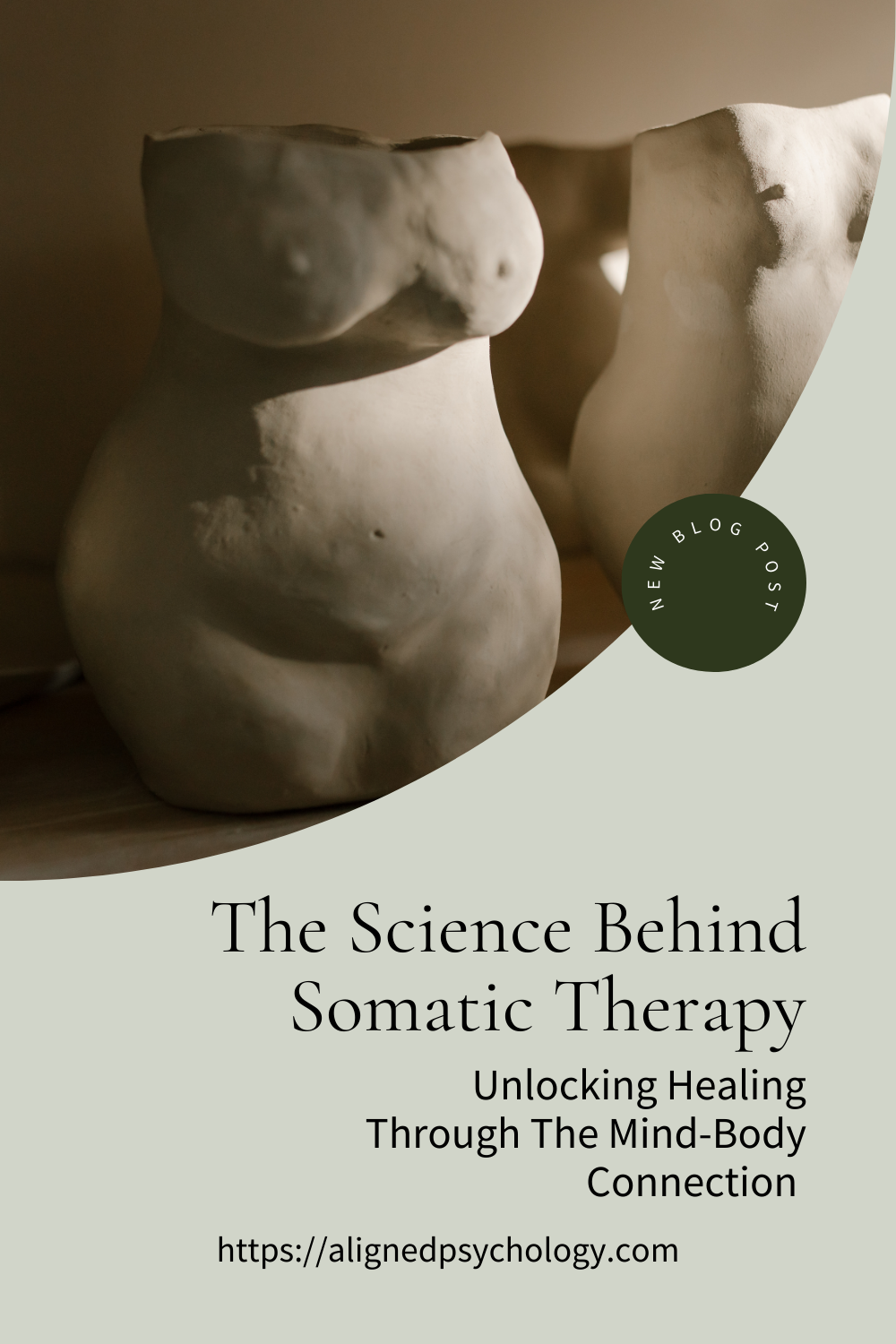The Science Behind Somatic Therapy: Unlocking Healing Through the Mind-Body Connection
Discover the science behind somatic therapy, and the connection between the mind, body, and nervous system
Somatic therapy is gaining recognition as a powerful approach to healing trauma, stress, and emotional distress. But how exactly does it work? This article delves into the science behind somatic therapy, exploring the intricate connection between the mind, body, and nervous system, and how somatic techniques facilitate healing.

The Impact of Stress and Trauma on the Nervous System
Our nervous system is a complex network that controls our body's responses to internal and external stimuli. When we experience stress or trauma, our nervous system activates the "fight-or-flight" response, preparing us to either confront or escape danger. This response involves a cascade of physiological changes, including:
- Increased heart rate and breathing
- Muscle tension
- Release of stress hormones like cortisol and adrenaline
In situations of chronic stress or overwhelming trauma, this fight-or-flight response can become dysregulated, leading to a state of chronic hyperarousal or hypoarousal (shutdown). This dysregulation can manifest in various physical and emotional symptoms, such as:
- Anxiety and panic attacks
- Chronic pain and muscle tension
- Digestive issues
- Sleep disturbances
- Emotional numbness or detachment
The Role of the Autonomic Nervous System
The autonomic nervous system (ANS) plays a crucial role in regulating our body's involuntary functions, including heart rate, digestion, and breathing. It consists of two main branches:
- Sympathetic Nervous System (SNS): Responsible for the "fight-or-flight" response, mobilizing the body for action.
- Parasympathetic Nervous System (PNS): Responsible for the "rest-and-digest" response, promoting relaxation and recovery.
In healthy functioning, the SNS and PNS work in balance, allowing us to respond effectively to stress and then return to a state of calm. However, chronic stress or trauma can disrupt this balance, leading to an overactive SNS or a suppressed PNS.
The Polyvagal Theory and Somatic Therapy
The Polyvagal Theory, developed by Dr. Stephen Porges, provides valuable insights into the role of the vagus nerve in regulating our emotional and social responses. The vagus nerve is a major component of the PNS and plays a crucial role in regulating heart rate, breathing, and digestion.
The Polyvagal Theory proposes that the vagus nerve has three distinct pathways:
- Ventral Vagal Pathway (Social Engagement System): Associated with social connection, safety, and calm.
- Sympathetic Nervous System (Fight-or-Flight): Mobilizes the body for action in response to danger.
- Dorsal Vagal Pathway (Freeze Response): Associated with shutdown, dissociation, and immobilization in response to overwhelming threat.
Somatic therapy techniques aim to regulate the nervous system by activating the ventral vagal pathway, promoting feelings of safety and connection.


How Somatic Therapy Techniques Impact the Body
Somatic therapy utilizes various techniques to help individuals regulate their nervous system and release stored tension and trauma. These techniques include:
- Grounding: Helps individuals connect with the present moment and their physical sensations, activating the ventral vagal pathway.
- Breathwork: Conscious breathing techniques can regulate heart rate and activate the PNS, promoting relaxation.
- Movement: Physical movement can help release stored tension and energy from the body.
- Titration: A technique used in Somatic Experiencing to gradually expose individuals to traumatic memories in a safe and controlled way, allowing for processing and release.
By engaging in these practices, individuals can:
- Increase awareness of bodily sensations
- Regulate their nervous system responses
- Release stored trauma and emotional energy
- Develop greater emotional resilience
The Evidence for Somatic Therapy
While more research is needed, studies suggest that somatic therapy can be effective for treating various conditions, including:
- PTSD
- Anxiety
- Depression
- Chronic pain
Research indicates that somatic approaches can lead to significant improvements in symptoms by addressing the underlying physiological mechanisms associated with these conditions.
Conclusion: Healing from the Inside Out
Somatic therapy offers a powerful approach to healing by addressing the intricate connection between the mind and body. By understanding the science behind how stress and trauma impact the nervous system and how somatic techniques can facilitate regulation and release, we can appreciate the profound potential of this therapeutic modality.

ABOUT THE AUTHOR
Dr. Chelsea
Chelsea Levenson PhD, Clinical Psychologist, specializes in creating safe, trusting space for clients on their journey toward healing. She specializes in somatic therapy and improving the mind-body connection. She is trained in trauma-focused modalities including Hakomi Somatic Therapy, EMDR, and IFS. She believes self-compassion, reflection, and awareness are keys to create lasting change. She worked in private practice, and intensive trauma treatment settings, including residential, PHP, and IOP levels of care.
Thank you for being part of a community of humans that deeply cares about healing.
We are honored that you stopped by and hope our resources will continue to bring value to your life.
We are accepting new clients in California, and referrals are always appreciated.












